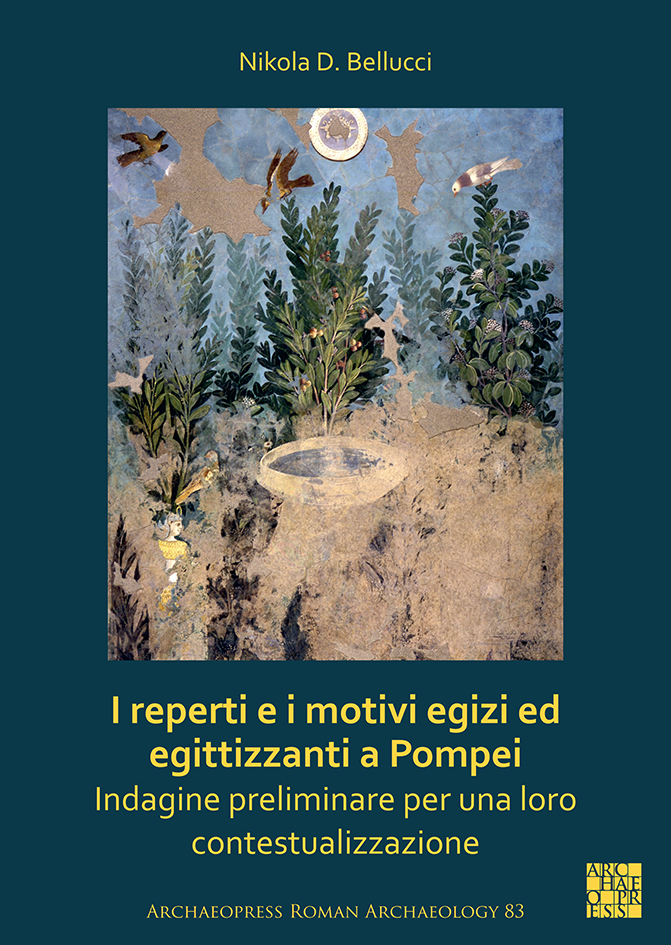I reperti e i motivi egizi ed egittizzanti a Pompei - 773 2021 Archaeopress Roman Archaeology 83
- Anno: 2021
- Autore/i: Nikola D. Bellucci
- Catalogo: Archaeopress
- Argomento: Archeologia
- ISBN: 9781789699241
- ISSN:
I reperti e i motivi egizi ed egittizzanti a Pompei. Indagine preliminare per una loro contestualizzazione presents a synthesis of Nikola Belluci’s research on Egyptian and Egyptianizing material from Pompeii. Starting from the historical context in which to frame these phenomena and proceeding with a review of terminology in order to offer a common lexicon for future research, the work provides a first up to date corpus of Egyptian and Egyptianizing subjects and finds from Pompeii. More specific analysis focuses on the various Nilotic scenes. Furthermore, the first results of correlations between frescoes and finds allow us to understand better the general and particular distribution of the various types of subjects and finds, evaluating their diffusion among regiones, insulae and domus. The volume includes numerous plates and a rich and up to date bibliography.
About the Author
Nikola D. Bellucci, dottore magistrale in Filologia classica (Th. Papirologia), dottore magistrale in Archeologia e culture del mondo antico (Th. Egittologia) presso l’Alma Mater Studiorum – Università di Bologna, è Dottore di ricerca (PhD) presso l’Università di Berna. Membro di alcuni tra i maggiori istituti scientifici internazionali d’antichità, è anche autore di numerose pubblicazioni scientifiche.
Reviews:
An extraordinary corpus of Egyptian and Egyptianizing objects at Pompeii testifies to the long, complex, and fraught history of interaction between Egypt and ancient Italy. Statuettes and amulets of Egyptian gods, wall paintings and mosaics depicting imagined Egyptian landscapes, imports (and local imitations) of valuable Egyptian luxury goods, and many other forms of ‘Aegyptiaca’ were part of the fabric of daily life in Pompeii. These objects and images provide rich evidence for the appropriation, emulation, and re-interpretation of Egyptian material culture in Roman – and pre-Roman – Italy. Accordingly, they attest first to the participation of Samnite Pompeii in a broader ‘Hellenistic’-period material koine, and, subsequently, to the lived experience of empire under Roman rule. In collecting and presenting all of the known Egyptian and Egyptianizing material culture from Pompeii, as well as the historical documentation for the earliest finds of these objects (including many artifacts and images which no longer survive today), Bellucci’s book provides an essential resource for scholarship. This important contribution will be required reading for anyone who seeks to understand the entangled history of Egypt and the Greco-Roman world. – Prof. Caitlín Eilís Barrett, Department of Classics, Cornell University – New York
F.to 174x245mm; 596 pages; 51 figures, 63 plates (colour throughout)



